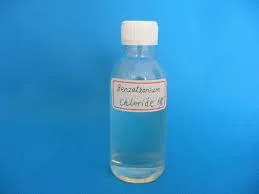water flocculation chemicals
Water Flocculation Chemicals An Overview
Water flocculation is a crucial process used in water treatment and wastewater management to remove suspended solids, pathogens, and other contaminants. It involves the aggregation of particles into larger clumps, called flocs, which can then be easily separated from the water. One of the key components in facilitating this process is the use of flocculation chemicals. This article explores the types of flocculation chemicals, their mechanisms, and their applications in various sectors.
Types of Flocculation Chemicals
Flocculation chemicals can be generally categorized into three main types coagulants, flocculants, and polyelectrolytes.
1. Coagulants These are substances that aid in the initial aggregation of fine particles. Common coagulants include aluminum sulfate (alum), ferric chloride, and polyaluminum chloride (PAC). When added to water, coagulants neutralize the negative charges on suspended particles, allowing them to clump together.
2. Flocculants These chemicals enhance the formation of flocs by binding the clumps together. Natural flocculants like starch or herbal extracts, as well as synthetic polymers like polyacrylamide, are widely used. Their addition improves the settling rate of flocs, making it easier to separate them from the treated water.
3. Polyelectrolytes These are large molecules that can carry positive or negative charges, and they play a dual role in both coagulation and flocculation. Polyelectrolytes can enhance the bridging of particles, leading to more efficient floc formation.
Mechanism of Action
The flocculation process typically involves two primary mechanisms charge neutralization and inter-particle bridging.
- Charge Neutralization In natural water bodies, most particles carry a negative charge due to the presence of suspended organic matter and other contaminants. When a coagulant is added, it positively charges the system, neutralizing the negative charges of the particles and allowing them to come closer together.
- Inter-Particle Bridging After initial floc formation, flocculants or polyelectrolytes create a bridge between the particles, promoting further aggregation
. This aggregation leads to the formation of larger and denser flocs that can settle more quickly in sedimentation tanks.water flocculation chemicals

Applications of Flocculation Chemicals
Flocculation chemicals are extensively used in various sectors, including municipal water treatment, industrial wastewater treatment, and even in food processing.
1. Municipal Water Treatment Water treatment plants often utilize flocculation as part of their treatment processes to ensure safe drinking water. It helps in removing turbidity, organic matter, and pathogens, thus meeting public health standards.
2. Industrial Wastewater Treatment Industries such as textiles, pharmaceuticals, and food processing generate wastewater laden with contaminants. Flocculation chemicals are essential in treating this wastewater before release into the environment. They help in reducing the biochemical oxygen demand (BOD) and total suspended solids (TSS) levels.
3. Food Processing In the food industry, flocculation plays a role in the clarification of juices, wines, and other liquids. By removing suspended particles and sediments, flocculation enhances the quality and appearance of food products.
Challenges and Future Directions
While flocculation chemicals offer significant benefits, there are challenges associated with their use, such as potential toxicity and environmental concerns. Research is ongoing to develop more sustainable and less harmful alternatives, especially focusing on biodegradable and less hazardous substances.
Furthermore, advancements in technology could lead to more efficient and automated solutions for real-time monitoring and control of flocculation processes, improving the overall effectiveness of water treatment systems.
Conclusion
Water flocculation chemicals are vital tools in the quest for cleaner water. By understanding their types, mechanisms, and applications, stakeholders can optimize water treatment processes, ensuring the provision of safe and clean water for communities and industries alike. As research continues to address existing challenges, the future of water treatment looks promising, with the potential for enhanced sustainability and efficiency in flocculation practices.
-
Water Treatment with Flocculant Water TreatmentNewsJun.12,2025
-
Polymaleic AnhydrideNewsJun.12,2025
-
Polyaspartic AcidNewsJun.12,2025
-
Enhance Industrial Processes with IsothiazolinonesNewsJun.12,2025
-
Enhance Industrial Processes with PBTCA SolutionsNewsJun.12,2025
-
Dodecyldimethylbenzylammonium Chloride SolutionsNewsJun.12,2025





